-
 Bitcoin
Bitcoin $76,479.4701
-3.52% -
 Ethereum
Ethereum $1,469.1142
-5.46% -
 Tether USDt
Tether USDt $0.9993
-0.03% -
 XRP
XRP $1.7902
-4.83% -
 BNB
BNB $551.0674
-0.78% -
 USDC
USDC $1.0003
0.02% -
 Solana
Solana $105.4201
-1.56% -
 TRON
TRON $0.2301
0.50% -
 Dogecoin
Dogecoin $0.1423
-4.38% -
 Cardano
Cardano $0.5589
-4.51% -
 UNUS SED LEO
UNUS SED LEO $9.0173
0.56% -
 Toncoin
Toncoin $3.0027
-2.56% -
 Chainlink
Chainlink $10.9146
-4.73% -
 Stellar
Stellar $0.2207
-4.45% -
 Avalanche
Avalanche $16.1527
-4.24% -
 Shiba Inu
Shiba Inu $0.0...01066
-6.81% -
 Sui
Sui $1.9318
-3.99% -
 Hedera
Hedera $0.1462
-4.08% -
 MANTRA
MANTRA $6.2098
-1.18% -
 Dai
Dai $1.0001
0.01% -
 Bitcoin Cash
Bitcoin Cash $268.3547
-2.84% -
 Polkadot
Polkadot $3.3678
-6.32% -
 Litecoin
Litecoin $69.1437
-2.09% -
 Ethena USDe
Ethena USDe $0.9986
-0.03% -
 Bitget Token
Bitget Token $3.9888
-4.59% -
 Hyperliquid
Hyperliquid $11.6557
0.72% -
 Pi
Pi $0.5672
-1.97% -
 Monero
Monero $196.0247
-4.01% -
 OKB
OKB $51.1597
0.14% -
 Uniswap
Uniswap $4.7818
-6.32%
How high is the maintenance cost of mining equipment for mining?
Cryptocurrency mining equipment maintenance costs vary greatly, depending on factors like equipment type, age, environment, and the miner's practices; preventative maintenance is crucial to minimize expensive, unexpected repairs and extend equipment lifespan.
Mar 20, 2025 at 09:35 am
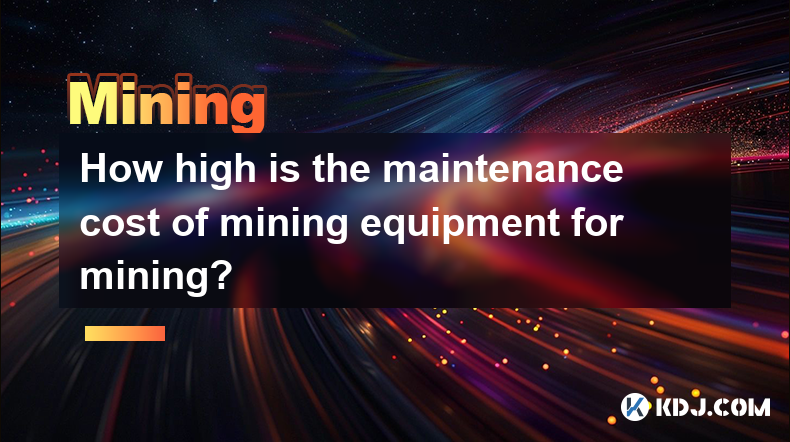
Key Points:
- Maintenance costs for cryptocurrency mining equipment are highly variable, depending on several factors.
- These factors include the type of equipment, its age, the mining environment, and the miner's maintenance practices.
- Regular maintenance can significantly extend the lifespan of equipment and reduce overall costs.
- Unexpected repairs can be expensive, highlighting the importance of preventative measures.
- Energy costs, while not strictly maintenance, are a major ongoing expense closely tied to operational upkeep.
How High is the Maintenance Cost of Mining Equipment for Mining?
The cost of maintaining cryptocurrency mining equipment isn't a fixed figure. It varies wildly based on several interconnected factors. Understanding these factors is crucial for anyone considering entering the mining space. Ignoring these costs can lead to significant financial losses.
Factors Affecting Maintenance Costs:
- Type of Equipment: ASIC miners, used for Bitcoin and other cryptocurrencies, have different maintenance needs than GPUs used for Ethereum mining or other GPU-minable coins. ASICs are generally more specialized and may require more specialized repair expertise. GPUs, being more versatile, might have readily available repair options, but still require care.
- Age of Equipment: Older equipment is more prone to malfunctions and requires more frequent maintenance. Wear and tear on components increases exponentially over time, potentially leading to costly repairs or replacements. Newer equipment, while initially more expensive, often boasts better reliability and lower maintenance needs initially.
- Mining Environment: The environment where the equipment operates plays a significant role. Extreme temperatures, dust, and humidity can accelerate wear and tear, leading to higher maintenance bills. A well-ventilated, climate-controlled environment is crucial for extending the lifespan of the equipment.
- Miner's Maintenance Practices: Proactive maintenance is key. Regular cleaning, monitoring of operating temperatures, and timely replacement of worn-out components can prevent costly breakdowns. Neglecting routine maintenance will invariably result in higher repair costs in the long run.
- Electricity Costs: While not directly maintenance, electricity consumption is a major ongoing expense intrinsically linked to operational upkeep. Higher electricity prices directly translate to increased operational costs, which should be factored into the overall maintenance budget.
Specific Maintenance Tasks and Costs:
Maintenance isn't a one-size-fits-all affair. It involves several tasks, each potentially carrying its own cost.
- Cleaning: Dust accumulation can hinder cooling and lead to overheating. Regular cleaning, ideally weekly or bi-weekly, is essential. This usually involves compressed air and careful brushing, a relatively inexpensive task.
- Fan Replacement: Fans are crucial for cooling. Failing fans can lead to overheating and equipment damage. Replacement costs vary depending on the fan type and accessibility.
- Power Supply Unit (PSU) Repair/Replacement: PSUs are vulnerable components. Failure can render the entire mining rig unusable. Replacement can be costly, depending on the PSU's power rating and brand.
- Heatsink Cleaning and Replacement: Heatsinks are vital for dissipating heat. Accumulated dust reduces their effectiveness. Cleaning is relatively straightforward, while replacement can be more involved and expensive.
- Chip Repair/Replacement: This is often the most expensive repair, sometimes even exceeding the cost of a new unit. Damage to the chips is usually irreparable, necessitating a full unit replacement.
- Firmware Updates: Keeping the miner's firmware updated is crucial for optimal performance and security. This is usually a free process, requiring only a connection to the internet and following the manufacturer's instructions. Failure to update can lead to vulnerabilities and reduced efficiency.
Preventative Maintenance Steps:
- Regularly inspect your mining equipment for any signs of wear and tear.
- Clean your equipment regularly to remove dust and debris.
- Monitor operating temperatures using monitoring software.
- Replace worn-out components promptly.
- Invest in a stable power supply and consider using a UPS (Uninterruptible Power Supply).
- Consider professional maintenance contracts for more comprehensive support.
Common Questions:
Q: What is the average monthly maintenance cost for a single ASIC miner?
A: There's no single answer. It depends heavily on the factors mentioned above. A reasonable estimate might range from $20 (for minimal cleaning and minor adjustments) to $200+ (for major repairs or component replacements), per month, per miner.
Q: Are there any ways to reduce maintenance costs?
A: Yes. Regular cleaning, proper ventilation, monitoring temperatures, and timely component replacements are all crucial for preventative maintenance and reducing long-term costs. Investing in high-quality equipment initially can also lower long-term maintenance needs.
Q: How often should I perform maintenance on my mining equipment?
A: A weekly or bi-weekly cleaning is generally recommended. More frequent inspections for potential issues are also advisable. The frequency of more involved maintenance tasks depends on the equipment's age and operating conditions.
Q: What should I do if my mining equipment fails?
A: Contact the manufacturer or a qualified repair technician. Attempting repairs yourself without the necessary expertise could worsen the problem. Also, always back up your mining configuration settings.
Q: Can I insure my mining equipment?
A: Some insurance providers offer coverage for specialized equipment like cryptocurrency mining hardware, though this is not always readily available or affordable. It's worth investigating options with your insurance provider.
Disclaimer:info@kdj.com
The information provided is not trading advice. kdj.com does not assume any responsibility for any investments made based on the information provided in this article. Cryptocurrencies are highly volatile and it is highly recommended that you invest with caution after thorough research!
If you believe that the content used on this website infringes your copyright, please contact us immediately (info@kdj.com) and we will delete it promptly.
- "Cardano (ADA) Price Could Dip Below $0.60, Following Previous Market Cycle"
- 2025-04-09 05:10:12
- BONK, the well-known meme coin, has risen over 35% in the last week, attracting meme coin investors in the market. So, what caused this rally?
- 2025-04-09 05:10:12
- Bitcoin (BTC) Investors May Not Exactly Feel It, but BTC Has Been a Relatively Good Bet
- 2025-04-09 05:05:12
- Donald's Bitcoin (DONBTC) Could Turn Early Investors into Multi-Millionaires, Like Shiba Inu (SHIB) and Dogecoin (DOGE) Did
- 2025-04-09 05:05:12
- 6 Upcoming Kraken Listings That Could Be the Next Big Thing in Crypto
- 2025-04-09 05:00:13
- COTI Unveils New Privacy-Focused Blockchain to Reshape Web3 Transactions
- 2025-04-09 05:00:13
Related knowledge
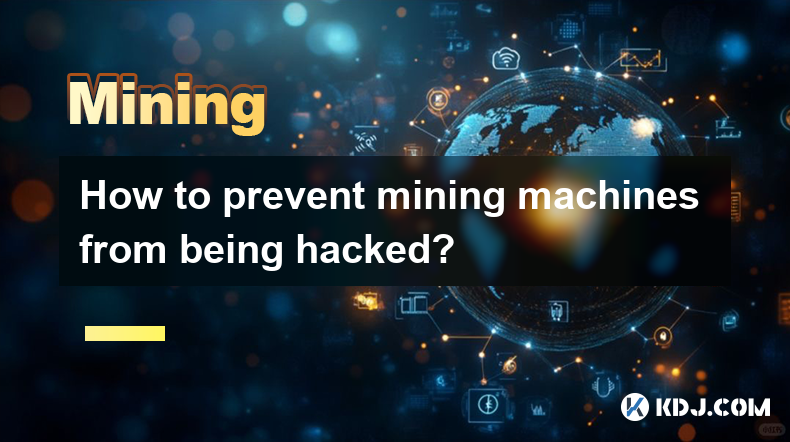
How to prevent mining machines from being hacked?
Apr 08,2025 at 09:00pm
In the world of cryptocurrency, mining machines play a crucial role in securing networks and validating transactions. However, these machines are also prime targets for hackers looking to exploit vulnerabilities for financial gain. Preventing mining machines from being hacked requires a multi-faceted approach that includes robust security measures, regu...
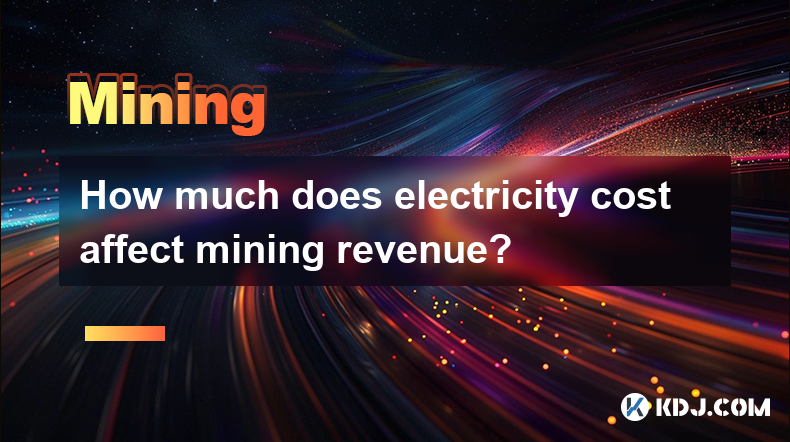
How much does electricity cost affect mining revenue?
Apr 08,2025 at 05:29pm
The cost of electricity plays a crucial role in determining the profitability of cryptocurrency mining. Mining revenue is directly impacted by the expenses incurred in running mining equipment, with electricity costs often being the most significant operational expense. Understanding how electricity costs affect mining revenue is essential for miners lo...
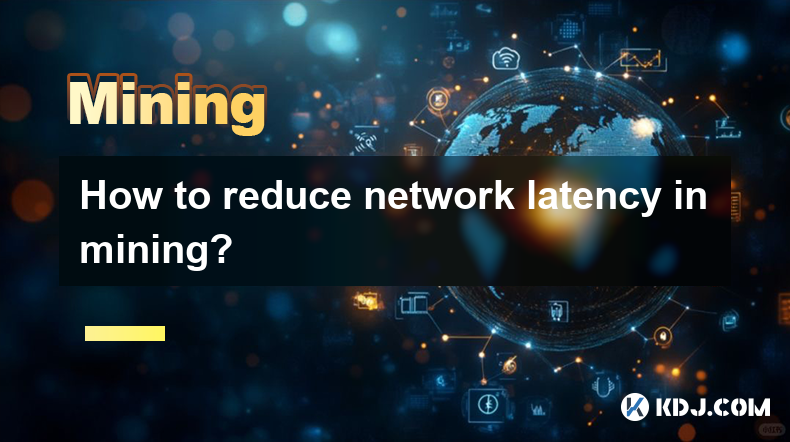
How to reduce network latency in mining?
Apr 09,2025 at 02:28am
Understanding Network Latency in MiningNetwork latency is a critical factor in the world of cryptocurrency mining. It refers to the time it takes for data to travel from its source to its destination across a network. In mining, lower latency can mean the difference between successfully adding a block to the blockchain and missing out on the reward. Red...

What is hashrate fluctuation?
Apr 08,2025 at 08:08pm
Hashrate fluctuation refers to the changes in the total computational power used by miners to process transactions and secure the blockchain network. This metric is crucial in the cryptocurrency world, particularly for networks like Bitcoin, Ethereum, and others that rely on proof-of-work (PoW) consensus mechanisms. Understanding hashrate fluctuation is...

Why does mining require a full node?
Apr 08,2025 at 06:49pm
Mining in the cryptocurrency world is a complex process that involves verifying transactions and adding them to the blockchain. One of the key components required for mining is a full node. But why is a full node necessary for mining? Let's delve into the reasons and explore the intricacies of this requirement. What is a Full Node?A full node is a progr...
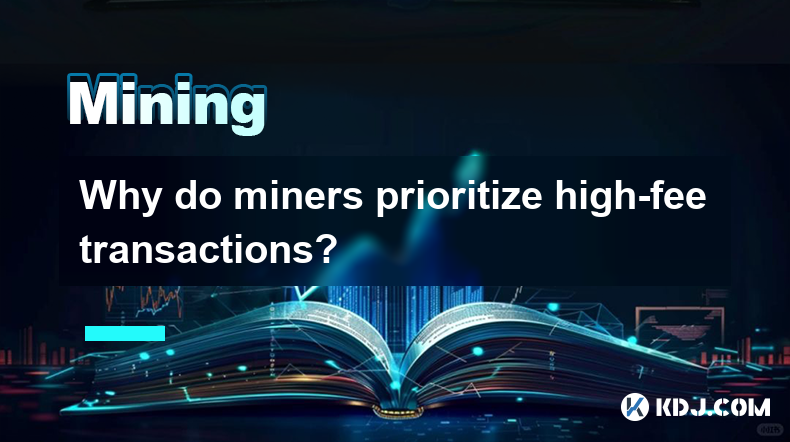
Why do miners prioritize high-fee transactions?
Apr 08,2025 at 05:01pm
Miners in the cryptocurrency ecosystem, particularly in networks like Bitcoin, play a crucial role in validating and adding transactions to the blockchain. One of the key factors that influence their decision-making process is the transaction fee associated with each transaction. Miners prioritize high-fee transactions primarily because these fees direc...

How to prevent mining machines from being hacked?
Apr 08,2025 at 09:00pm
In the world of cryptocurrency, mining machines play a crucial role in securing networks and validating transactions. However, these machines are also prime targets for hackers looking to exploit vulnerabilities for financial gain. Preventing mining machines from being hacked requires a multi-faceted approach that includes robust security measures, regu...

How much does electricity cost affect mining revenue?
Apr 08,2025 at 05:29pm
The cost of electricity plays a crucial role in determining the profitability of cryptocurrency mining. Mining revenue is directly impacted by the expenses incurred in running mining equipment, with electricity costs often being the most significant operational expense. Understanding how electricity costs affect mining revenue is essential for miners lo...

How to reduce network latency in mining?
Apr 09,2025 at 02:28am
Understanding Network Latency in MiningNetwork latency is a critical factor in the world of cryptocurrency mining. It refers to the time it takes for data to travel from its source to its destination across a network. In mining, lower latency can mean the difference between successfully adding a block to the blockchain and missing out on the reward. Red...

What is hashrate fluctuation?
Apr 08,2025 at 08:08pm
Hashrate fluctuation refers to the changes in the total computational power used by miners to process transactions and secure the blockchain network. This metric is crucial in the cryptocurrency world, particularly for networks like Bitcoin, Ethereum, and others that rely on proof-of-work (PoW) consensus mechanisms. Understanding hashrate fluctuation is...

Why does mining require a full node?
Apr 08,2025 at 06:49pm
Mining in the cryptocurrency world is a complex process that involves verifying transactions and adding them to the blockchain. One of the key components required for mining is a full node. But why is a full node necessary for mining? Let's delve into the reasons and explore the intricacies of this requirement. What is a Full Node?A full node is a progr...

Why do miners prioritize high-fee transactions?
Apr 08,2025 at 05:01pm
Miners in the cryptocurrency ecosystem, particularly in networks like Bitcoin, play a crucial role in validating and adding transactions to the blockchain. One of the key factors that influence their decision-making process is the transaction fee associated with each transaction. Miners prioritize high-fee transactions primarily because these fees direc...
See all articles






















































































